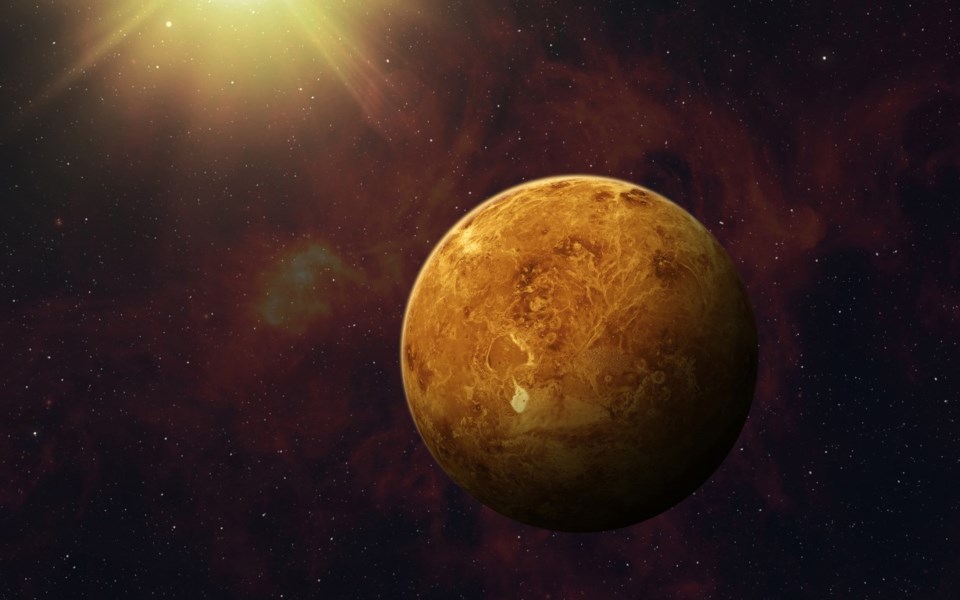The moon begins the month near first quarter, reaching perigee Sept. 7. A day later, Saturn is four degrees north of the moon. Sept. 10, the moon is full and Neptune is three degrees north. Sept. 11, Jupiter is 1.8 degrees north of the moon, which would be a noteworthy event except the bright moon overpowers the gas-giant planet. The event could present a photo opportunity for astrophotographers though. By Sept. 14, Uranus is occulted by the moon for viewers in the Eastern Hemisphere, a close graze of 0.8 degrees for the rest of the world. The moon at last quarter is four degrees north of Mars Sept. 17. Sept. 20, the waning crescent moon is 1.9 degrees south of the Gemini twin, Pollux. New moon is Sept. 25.
Mercury is poorly placed for viewers in the Northern Hemisphere, and by Sept. 23, reaches inferior conjunction – in front of the sun and not visible.
Venus is in the Morning Star role early in the month, slowly rounding in its orbit and getting closer to the sun. The favourable dawn ecliptic angle makes for a good sight; the planet is clearly a full disk, especially if viewed through binoculars or a telescope.
Mars is in the constellation Taurus, the Bull, all through the month, rising near midnight. Sept. 9, the bright star in Taurus, Aldebaran, is four degrees to the south. The last-quarter moon passes by Sept. nights of Sept. 17 to 19.
Jupiter is near the moon Sept. 11 (see above), reaching opposition Sept. 26. The term opposition means “opposite the sun,” so when the sun is at your back at midnight, Jupiter is due south, presenting a good viewing opportunity. This is a good time to view the Galilean moons, seen at their brightest. The gas giant is retrograding in September, appearing to move westward against the starry background.
Saturn is visible in the evening eastern sky as twilight ends, presenting a great opportunity to see the planet’s rings. Get a telescope or even decent-sized binoculars to see the giant planet against the blackness of space. You might even be able to see a moon or two. There are eight Saturnian moons bright enough for such viewing, but usually only five are visible at any one time. Saturn is also in retrograde mode, moving westward through Capricornus. The moon passes by Sept. 8th.
Uranus rises late in the evening, retrograding through Aries. An occultation occurs Sept. 14th for eastern viewers (see above).
Neptune is in opposition Sept. 16th, when the sunlight reflected off the greenish gas planet reaches Earth 4 hours later – it’s nearly 29 astronomical units away from us here, the distance from Earth to the sun times 29!
The zodiacal light is visible in the eastern morning twilight for the last week of the month.
The autumnal equinox occurs late in the evening on Sept. 22.
James Edgar has had an interest in the night sky all his life. He joined the Royal Astronomical Society of Canada in 2000, was national president for two terms, is now the editor of Observer’s Handbook, and production manager of the bi-monthly RASC Journal. The IAU named asteroid 1995 XC5 “(22421) Jamesedgar” in his honour and in 2021 he was awarded a Fellowship of the RASC.




